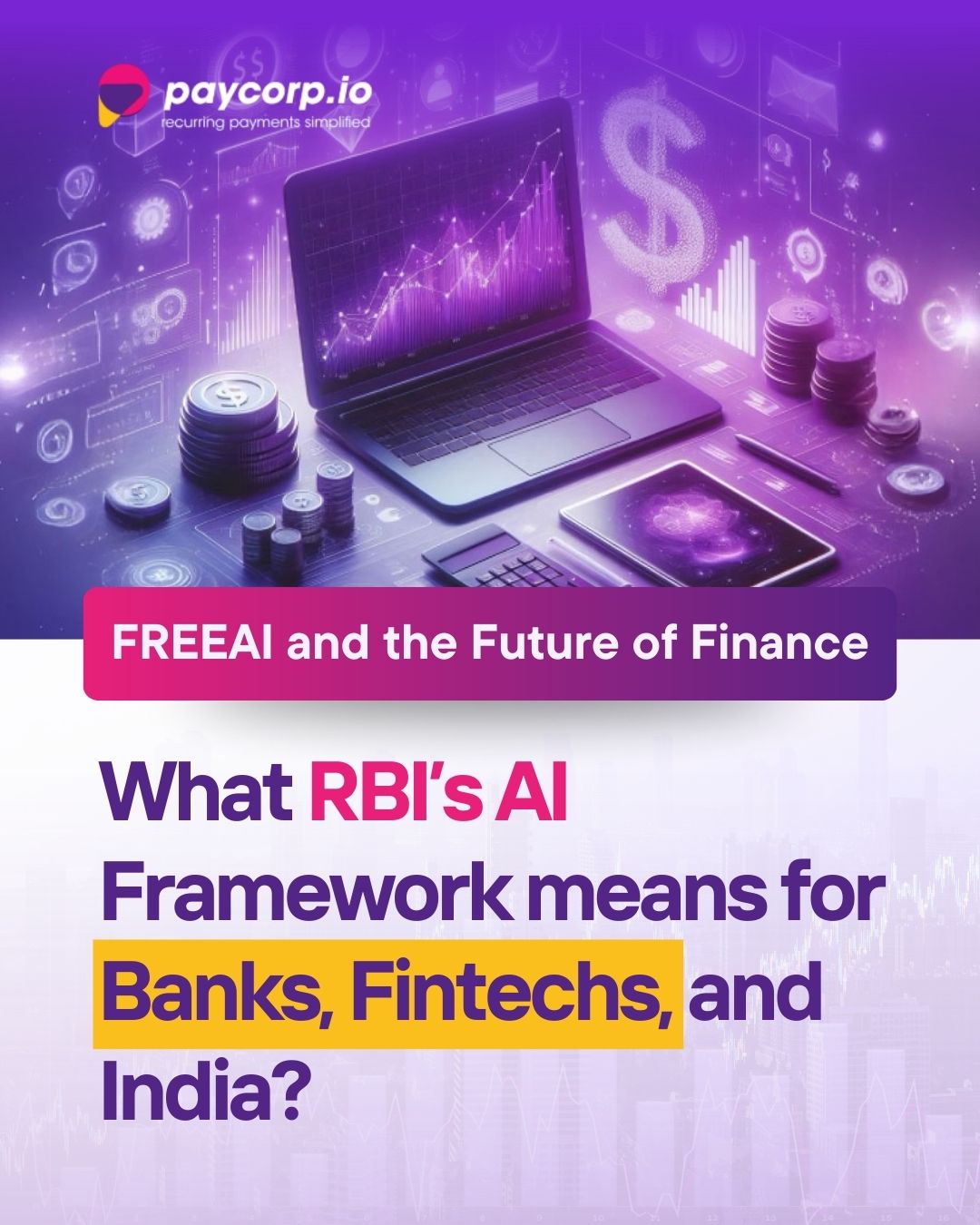Introduction: India Steps Up to Shape Ethical AI in Finance
The Reserve Bank of India (RBI) has released a landmark report titled “FREEAI”—Framework for Responsible and Ethical Enablement of Artificial Intelligence. In a world where AI is already making decisions about who gets a loan, who gets flagged for fraud, or which customer gets a faster response, it’s critical to ask: who governs the machine? FREEAI addresses this head-on.
This write-up is a deep dive into each chapter of the FREEAI report, simplified for understanding and tailored to those working in banking, NBFCs, fintechs, and public policy. It also shares my own perspective—as someone who has been building fintech platforms for a decade—on why this matters for India’s financial future.
Chapter 1: Why We Need a Framework Now
AI is no longer an emerging technology. It is embedded in everything—from credit underwriting and fraud detection to KYC and customer support. Yet most institutions have deployed AI without a standard set of ethics or accountability.
FREEAI sets out to define what “responsible AI” should look like for the financial sector. The timing is perfect. With GenAI models growing in popularity and financial institutions leaning heavily on automation, this report gives the sector a north star.
For Banks/NBFCs: Expect a shift from passive adoption to active accountability. AI systems will need to be explainable and auditable. Internal governance teams will need to be set up.
For Fintechs: You now have a clear framework to differentiate your product. If you can demonstrate compliance with FREEAI principles, banks and regulators will see you as a more trustworthy partner.
For India: This is about global leadership. We’re not copying other countries—we’re creating our own culturally aware and inclusive framework.
Chapter 2: Seven Sutras of Responsible AI
FREEAI outlines seven core principles—or “sutras”—that must guide every AI deployment:
- Fairness
- Inclusivity
- Transparency
- Accountability
- Safety and Security
- Contestability (ability to challenge decisions)
- Explainability
These aren’t abstract ideals. They are operational mandates.
Implications:
- A credit scoring model must now be checked for bias.
- Customers rejected by AI will have the right to contest decisions.
- Financial institutions must ensure AI decisions can be explained in human terms.
This forces a shift in mindset: from efficiency-at-all-cost to inclusive-and-accountable design.
Chapter 3: Current Use Cases and Associated Risks
The report calls out how AI is currently being used across the financial system:
- Automated underwriting and credit scoring
- Voice bots and chatbots
- Risk-based pricing
- Real-time fraud detection
- Surveillance of financial markets
Along with the use cases, it highlights serious risks:
- Bias against certain groups
- Lack of transparency
- Cybersecurity concerns
- Customer distrust
What It Means:
- Banks/NBFCs: You’ll need to audit existing AI systems and assess whether they align with the FREEAI guidelines.
- Fintechs: This is your chance to offer auditable, bias-resistant, explainable AI tools.
- For India: Protecting consumer rights while using advanced AI puts India on the right side of digital history.
Chapter 4: The 26 Strategic Recommendations
The heart of the report lies in 26 granular recommendations across six themes:
- Governance – Boards must own AI accountability. Risk committees must monitor AI lifecycle.
- Fairness & Ethics – Bias audits, diverse training datasets, regular validations.
- Transparency – Use of model cards, customer disclosures, and documentation of decision logic.
- Data Privacy & Localisation – AI must comply with India’s DPDP Act. Use Indian data. Protect it rigorously.
- Regulatory Sandboxing – RBI to facilitate AI testing environments.
- Grievance Redressal – Build systems that allow customers to challenge AI decisions.
Strategic Insights:
- This isn’t checkbox compliance. This is foundational redesign.
- Early movers will gain credibility with regulators, partners, and investors.
Chapter 5: Building BharatAI—An India-First AI Infrastructure
India isn’t just regulating AI. It’s planning to build it.
The report introduces the idea of a BharatAI Stack—a sovereign AI infrastructure tailored to Indian languages, financial contexts, and consumer behavior. This is in line with our DPI model (like UPI, Aadhaar, and ONDC).
Opportunities:
- Banks: Can co-create India-first AI use cases (vernacular chatbots, low-bandwidth KYC tools).
- Fintechs: Tremendous scope to build AI models using Indian data, in partnership with regulators.
- India: Becomes a leader in ethical, inclusive AI. Not just in finance—but across governance, education, and health too.
Final Thoughts: This is a Runway, Not a Roadblock
FREEAI is not about slowing down innovation. It’s about ensuring that we scale AI with responsibility. At Paycorp, we have already started realigning our AI-based platforms to match the expectations of explainability and fairness. Our internal roadmap is being updated—not just for compliance, but because we believe this is how trust is built.
This framework is also a great equalizer. It doesn’t matter if you’re a large bank or a nimble fintech—what matters is whether your AI respects the people it serves.
Let’s build the future with integrity.
Balaji Jagannathan
Chief Strategist | Paycorp | Evolvus | Syneca




